Microwave-Accelerated and Metal-Enhanced Fluorescence Myoglobin Detection on Silvered Surfaces: Potential Application to Myocardial Infarction Diagnosis
- PMID: 19444320
- PMCID: PMC2678713
- DOI: 10.1007/s11468-006-9006-7
Microwave-Accelerated and Metal-Enhanced Fluorescence Myoglobin Detection on Silvered Surfaces: Potential Application to Myocardial Infarction Diagnosis
Abstract
In this short paper, we describe a novel approach to both significantly accelerate and optically amplify fluorescence-based immunoassays. Our approach utilizes metal-enhanced fluorescence (MEF) to intrinsically optically amplify fluorescence signatures, which, when combined with the use of low-power microwaves to kinetically accelerate assays, provides for both ultrafast and ultrabright immunoassays. Surprisingly, the use of low-power microwaves and silver nanostructures provides for localized heating, concentrating the effect to the particles themselves as compared to the generic heating of the high dielectric assay fluid. We have subsequently applied our microwave-accelerated MEF approach to the detection of myoglobin, where its rapid quantification is paramount for the clinical assessment of an acute myocardial infarction.
Figures

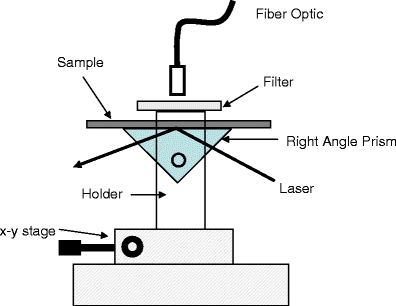
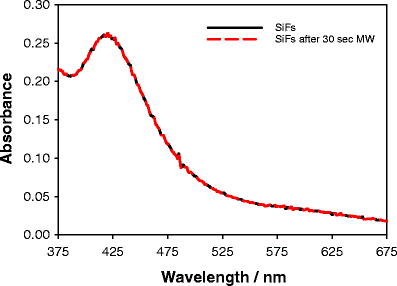
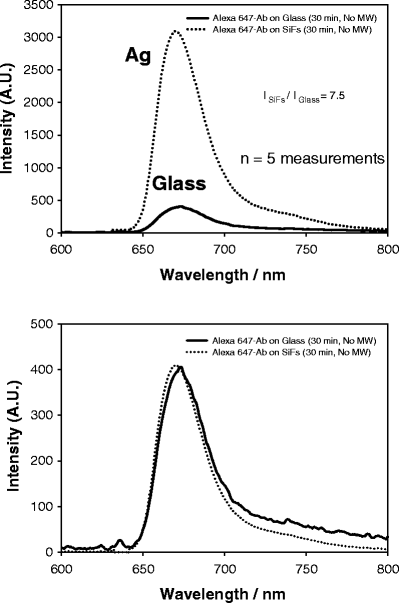
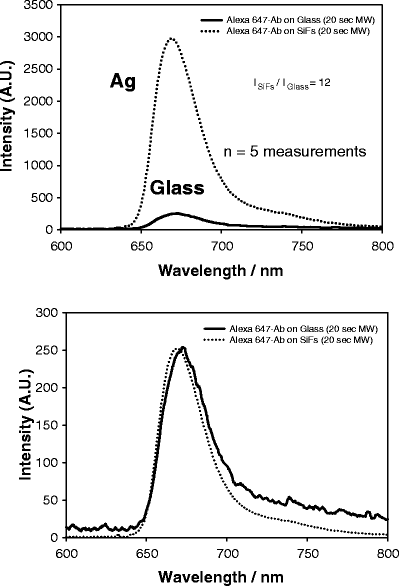
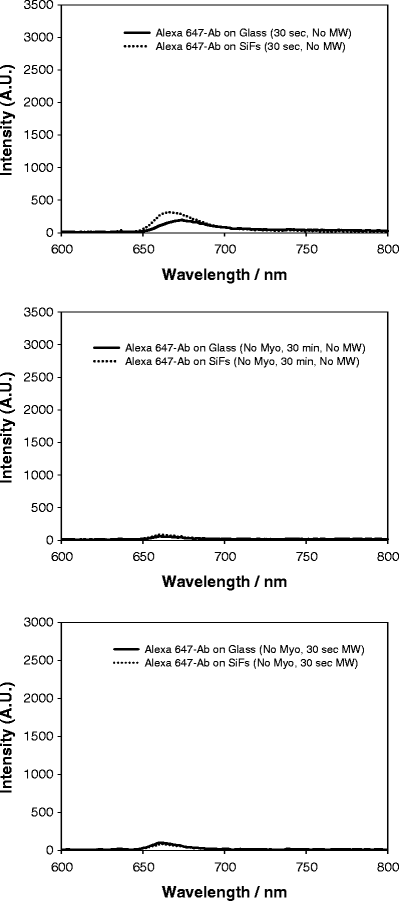
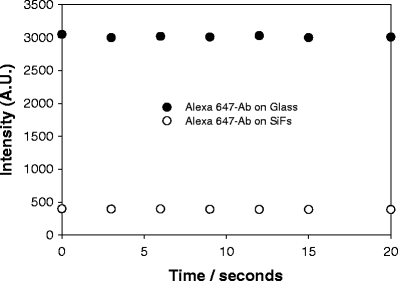
Similar articles
-
Microwave-accelerated metal-enhanced fluorescence: platform technology for ultrafast and ultrabright assays.Anal Chem. 2005 Dec 15;77(24):8057-67. doi: 10.1021/ac0516077. Anal Chem. 2005. PMID: 16351156
-
Microwave-accelerated metal-enhanced fluorescence (MAMEF): application to ultra fast and sensitive clinical assays.J Fluoresc. 2006 Jan;16(1):3-8. doi: 10.1007/s10895-005-0026-z. Epub 2005 Dec 22. J Fluoresc. 2006. PMID: 16374655
-
Microwave-Accelerated Metal-Enhanced Fluorescence (MAMEF) with silver colloids in 96-well plates: Application to ultra fast and sensitive immunoassays, High Throughput Screening and drug discovery.J Immunol Methods. 2006 May 30;312(1-2):137-47. doi: 10.1016/j.jim.2006.03.009. Epub 2006 Apr 25. J Immunol Methods. 2006. PMID: 16678196
-
New tools for rapid clinical and bioagent diagnostics: microwaves and plasmonic nanostructures.Analyst. 2008 Nov;133(11):1469-80. doi: 10.1039/b808292h. Epub 2008 Sep 18. Analyst. 2008. PMID: 18936822 Review.
-
Synthesis of Medicinally Privileged Heterocycles through Dielectric Heating.Curr Med Chem. 2017;24(41):4596-4626. doi: 10.2174/0929867324666170223152137. Curr Med Chem. 2017. PMID: 28240166 Review.
Cited by
-
Blind evaluation of the microwave-accelerated metal-enhanced fluorescence ultrarapid and sensitive Chlamydia trachomatis test by use of clinical samples.J Clin Microbiol. 2013 Sep;51(9):2913-20. doi: 10.1128/JCM.00980-13. Epub 2013 Jun 26. J Clin Microbiol. 2013. PMID: 23804384 Free PMC article.
-
Plasmonic Fluorescence Enhancement in Diagnostics for Clinical Tests at Point-of-Care: A Review of Recent Technologies.Adv Mater. 2023 Aug;35(34):e2107986. doi: 10.1002/adma.202107986. Epub 2022 Apr 24. Adv Mater. 2023. PMID: 35332957 Free PMC article. Review.
-
Elucidation of a non-thermal mechanism for DNA/RNA fragmentation and protein degradation when using Lyse-It.PLoS One. 2019 Dec 2;14(12):e0225475. doi: 10.1371/journal.pone.0225475. eCollection 2019. PLoS One. 2019. PMID: 31790434 Free PMC article.
-
Conversion of just-continuous metallic films to large particulate substrates for metal-enhanced fluorescence.J Appl Phys. 2008 Apr 15;103(8):84307-843077. doi: 10.1063/1.2905319. Epub 2008 Apr 25. J Appl Phys. 2008. PMID: 19479004 Free PMC article.
-
Rapid and sensitive detection of troponin I in human whole blood samples by using silver nanoparticle films and microwave heating.Clin Chem. 2011 May;57(5):746-52. doi: 10.1373/clinchem.2010.159889. Epub 2011 Mar 11. Clin Chem. 2011. PMID: 21398602 Free PMC article.
References
-
- {'text': '', 'ref_index': 1, 'ids': [{'type': 'PubMed', 'value': '9342013', 'is_inner': True, 'url': 'https://pubmed.ncbi.nlm.nih.gov/9342013/'}]}
- Ellenius J, Groth T, Lindahl B, Wallentin L (1997) Early assessment of patients with suspected acute myocardial infarction by biochemical monitoring and neural network analysis. Clin Chem 43:1919–1925 - PubMed
-
- {'text': '', 'ref_index': 1, 'ids': [{'type': 'PubMed', 'value': '11294799', 'is_inner': True, 'url': 'https://pubmed.ncbi.nlm.nih.gov/11294799/'}]}
- Newby LK, Storrow AB, Gibler WB, Garvey JL, Tucker JF, Kaplan AL, Schreiber DH, Tuttle RH, McNulty SE, Ohman EM (2001) Bedside multimarker testing for risk stratification in chest pain units—the chest pain evaluation by creatine kinase-MB, myoglobin, and troponin I (CHECKMATE) study. Circulation 103:1832–1837 - PubMed
-
- {'text': '', 'ref_index': 1, 'ids': [{'type': 'PubMed', 'value': '10451245', 'is_inner': True, 'url': 'https://pubmed.ncbi.nlm.nih.gov/10451245/'}]}
- Storrow AB, Gibler WB (1999) The role of cardiac markersin the emergency department. Clin Chim Acta 284:187–196 - PubMed
-
- {'text': '', 'ref_index': 1, 'ids': [{'type': 'PubMed', 'value': '10475079', 'is_inner': True, 'url': 'https://pubmed.ncbi.nlm.nih.gov/10475079/'}]}
- Panteghini M, Apple FS, Christenson RH, Dati F, Mair J, WuAH (1999) Use of biochemical markers in acute coronary syndromes. Clin Chem Lab Med 37:687–693 - PubMed
-
- {'text': '', 'ref_index': 1, 'ids': [{'type': 'PubMed', 'value': '7785657', 'is_inner': True, 'url': 'https://pubmed.ncbi.nlm.nih.gov/7785657/'}]}
- Woo J, Lacbawan FL, Sunheimer R, LeFever D, McCabe JB (1995) Is myoglobin useful in the diagnosis ofacute myocardial-infarction in the emergency department setting. Am J Clin Pathol 103:725–729 - PubMed
Grants and funding
LinkOut - more resources
Full Text Sources
Other Literature Sources
